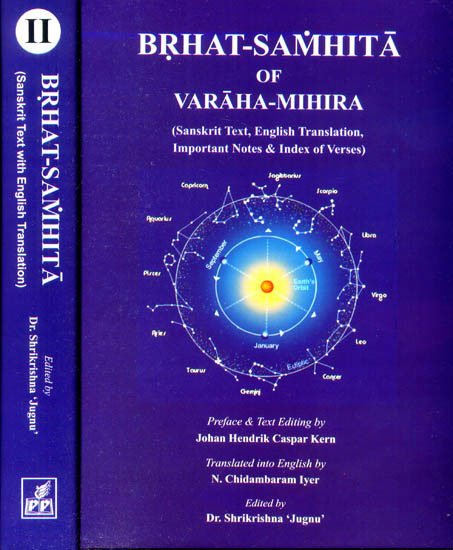Brihat Samhita
by N. Chidambaram Iyer | 1884 | 135,584 words | ISBN-13: 9788171104215
This page describes rain support days (garbha-dharana) which is the twenty-second Chapter of the English translation of the Brihat-samhita. This work, written by Varahamihira in the 6th century, is classified as jyotisha literature, also known as Indian astronomy. It contains however, also content regarding astrology, palmistry, agriculture, gardening, perfumes, medicines and various other encyclopedic topics.
Chapter 22 - On rain support days (garbha-dhāraṇa)
[Sanskrit text for this chapter is available]
1. The four days commencing from the eighth day in the light half of the month of Jyeṣṭha (May and June) are known as Vāyu Dhāraṇa days, that is, days from the winds that blow on which the nature of the health of the pregnancy of the rain-clouds might be determined. If the winds should be gentle and agreeable and then, if the sky should be covered by fine, bright clouds, there will be good rain.
2. But if, in the said light half of Jyeṣṭha, there should be a fall of rain in the four days when the Moon passes through the asterism of from Svāti to Jyeṣṭhā, there will be rain in the rainy season—from Srāvaṇa to Kārttika (August to November).
3. If the four Dhāraṇa days should be exactly alike in their indications, there will be happiness in the land; if different from one another, there will be misery, and there will also be fear from robbers; we have the recorded opinion of Vasiṣṭha to the same effect.
4. If on the Dhāraṇa days, the Sun and Moon should be covered by wet clouds attended by lightning and dust-storm, there will be good rain.
5. If on the Dhāraṇa days the sky should be marked by beautiful lightning alternately appearing in opposite benefic quarters, every species of crop will thrive.
6-8. If on the same days there should fall a shower of rain attended by dust-storm, or if children should engage in happy play, or if birds should sing or play in the dust or in water, or if the halos round the Sun and Moon should appear bright and not much disfigured, there will be rain and all crops will thrive. If, on the Dhāraṇa days, the clouds should appear beautiful and collected together with their course from left to right, there will be immediate rain and such rain will be exceedingly useful to the crops.
